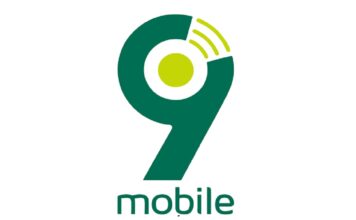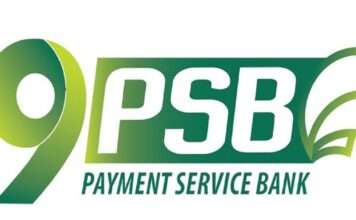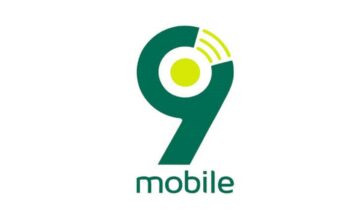Buying Crypto? Here is How to Set up Your Wallets
Buying crypto is not difficult but not when you don’t know how to set up your crypto wallets. Many people are interested in cryptocurrencies assets investment but lack the basics amidst noise and information about the Blockchain products.
Despite ban placed on the Blockchain by the Nigerian Central Bank, the growing acceptance has not really taken a reverse.
But some people that are interested still don’t know how to set up crypto wallets to aid and this alone has kept millions of people out of the space.
Coinbase which recently listed on the New York Stock Exchange said a crypto wallet is a place where you can securely keep your crypto.
Explaining, it stated that there are many different types of crypto wallets, but the most popular ones are hosted wallets, non-custodial wallets, and hardware wallets.
Actually, the one that is right for you depends on what you want to do with your crypto and what kind of safety net you want to have.
Buying Crypto, this about these wallets for your investment.
Hosted wallets
Hosted wallets appears to be the most popular and easy-to-set-up cryptocurrencies account.
When you buy crypto using an app like Coinbase, your crypto is automatically held in a hosted wallet.
It’s called hosted because a third party keeps your crypto for you, similar to how a bank keeps your money in a checking or savings account.
You may have heard of people “losing their keys” or “losing their USB wallet” but with a hosted wallet you don’t have to worry about any of that.
According to Coinbase, the main benefit of keeping your crypto in a hosted wallet is if you forget your password, you won’t lose your crypto.
A drawback to a hosted wallet is you can’t access everything crypto has to offer. However, that may change as hosted wallets start to support more features.
How to set up a hosted wallet:
- Choose a platform you trust. Your main considerations should be security, ease of use, and compliance with government and financial regulations.
- Create your account. Enter your personal info and choose a secure password. It’s also recommended to use 2-step verification (also called 2FA) for an extra layer of security.
Buy or transfer crypto: Coinbase explained that most crypto platforms and exchanges allow you to buy crypto using a bank account or credit card. If you already own crypto, you can also transfer it to your new hosted wallet for safe keeping.
Non-custodial wallets
A non-custodial wallet, like Coinbase Wallet or MetaMask, puts you in complete control of your crypto.
The thing is, if you chose this option, non-custodial wallets don’t rely on a third party — or a “custodian” — to keep your crypto safe.
This simply means you are in control.
While they provide the software necessary to store your crypto, the responsibility of remembering and safeguarding your password falls entirely on you.
But if you lose or forget your password — often referred to as a “private key” or “seed phrase” — there’s no way to access your crypto.
Another downside to this is that if someone else discovers your private key, they’ll get full access to your assets.
Why have a non-custodial wallet?
In addition to being in full control of the security of your crypto, you can also access more advanced crypto activities like yield farming, staking, lending, borrowing, and more, says Coinbase in a note.
It advised that if all you want to do is buy, sell, send, and receive crypto, a hosted wallet is the easiest solution.
How to set up a non-custodial wallet:
- Download a wallet app. Popular options include Coinbase Wallet and MetaMask.
- Create your account. Unlike a hosted wallet, you don’t need to share any personal info to create a non-custodial wallet. Not even an email address.
- However, be sure to write down your private key. It’s presented as a random 12-word phrase. Keep it in a secure location. If you lose or forget this 12-word phrase you won’t be able to access your crypto.
- Transfer crypto to your wallet. It’s not always possible to buy crypto using traditional currencies (like US dollars or Euros) with a non-custodial wallet, so you’ll need to transfer crypto into your non-custodial wallet from elsewhere.
If you’re a Coinbase customer, you have your choice of a hosted wallet or a non-custodial wallet as Coinbase app, where you buy and sell crypto, is a hosted wallet.
You can also download the standalone Coinbase Wallet app to take advantage of the benefits of a non-custodial wallet. Some of our customers have both, making it easy to buy crypto with traditional currency as well as participate in advanced crypto activities.
Hardware wallets
A hardware wallet is a physical device, about the size of a thumb drive that stores the private keys to your crypto offline.
Most people don’t use hardware wallets because of their increased complexity and cost, but they do have some benefits — for example, they can keep your crypto secure even if your computer is hacked.
However, this advanced security makes them inconvenient to use compared to a software wallet and they can cost upwards of $100 to buy.
How to set up a hardware wallet:
- Buy the hardware. The two most well-known brands are Ledger and Trezor.
- Install the software. Each brand has their own software that’s needed to set up your wallet. Download the software from the official company website and follow the instructions to create your wallet.
- Transfer crypto to your wallet. Similar to a non-custodial wallet, a hardware wallet typically doesn’t allow you to buy crypto using traditional currencies (like US dollars or Euros), so you’ll need to transfer crypto to your wallet.
Just as there are many ways to store cash (in a bank account, in a safe, under the bed), there are many ways to buying crypto for storage.
Read also: Foreign Investment Drops as Investors Sideline Nigerian Economy
You can keep things simple with a hosted wallet, have full control of your crypto with a non-custodial wallet, take extra precautions with a hardware wallet, or even have multiple types of wallets — with crypto the choice is yours.
Buying Crypto? Here is How to Set up Your Wallets




























































































